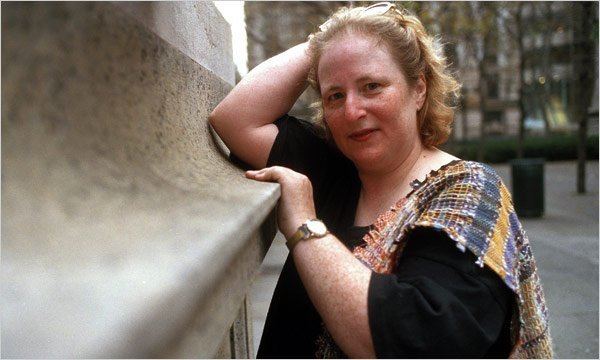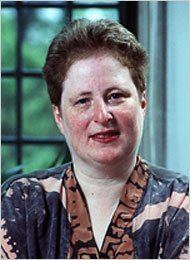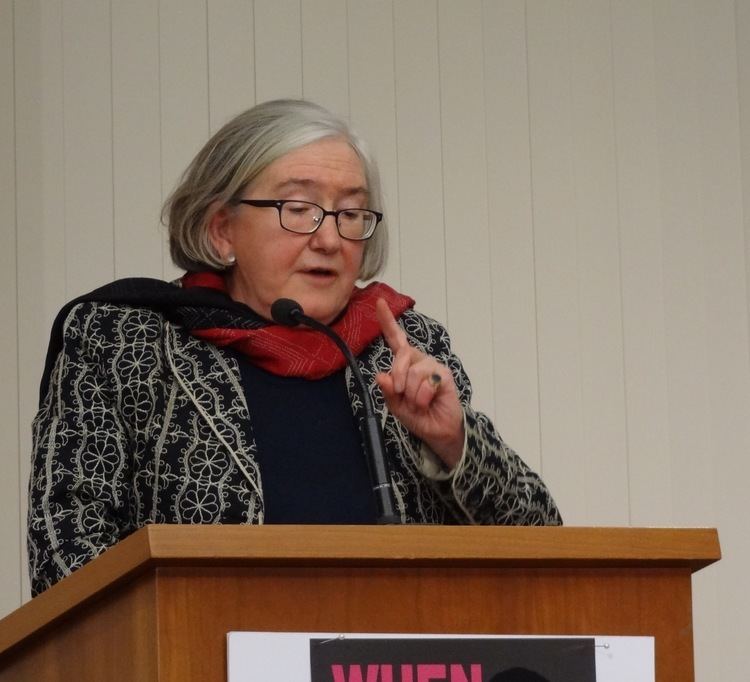Genre Literary criticism Name Eve Sedgwick | Role Academic | |
 | ||
Occupation Academic, author, essayist, critic, poet Spouse Hal Sedgwick, 1969-2009 (death) Awards Guggenheim Fellowship for Humanities, US & Canada Books Epistemology of the Closet, Between Men: English Li, Touching feeling, Tendencies, A dialogue on love Similar People Judith Butler, Michel Foucault, Sigmund Freud, Marcel Proust, Jacques Derrida | ||
3rd annual eve kosofsky sedgwick memorial lecture in gender and sexuality studies
Eve Kosofsky Sedgwick (May 2, 1950 – April 12, 2009) was an American academic scholar in the fields of gender studies, queer theory (queer studies), and critical theory. Sedgwick published several books considered "groundbreaking" in the field of queer theory, including Between Men: English Literature and Male Homosocial Desire (1985), Epistemology of the Closet (1990), and Tendencies (1993). Her critical writings helped create the field of queer studies. Her works reflect an interest in a range of issues, including queer performativity; experimental critical writing; the works of Marcel Proust; non-Lacanian psychoanalysis; artists' books; Buddhism and pedagogy; the affective theories of Silvan Tomkins and Melanie Klein; and material culture, especially textiles and texture.
Contents
- 3rd annual eve kosofsky sedgwick memorial lecture in gender and sexuality studies
- 5th annual eve kosofsky sedgwick memorial lecture in gender and sexuality studies by saba mahmood
- Biography
- Ideas and literary criticism
- The queer lens
- Body of work
- Between Men English Literature and Male Homosocial Desire 1985
- Epistemology of the Closet 1990
- Tendencies 1993
- A Dialogue on Love 1999
- Touching Feeling Affect Pedagogy Performativity 2003
- List of publications
- References

Drawing on feminist scholarship and the work of Michel Foucault, Sedgwick uncovered what she claimed were concealed homoerotic subplots in writers like Charles Dickens and Henry James. Sedgwick argued that an understanding of virtually any aspect of modern Western culture would be incomplete or damaged if it failed to incorporate a critical analysis of modern homo/heterosexual definition. She coined the terms "homosocial" and "antihomophobic."

5th annual eve kosofsky sedgwick memorial lecture in gender and sexuality studies by saba mahmood
Biography

Eve Kosofsky was raised in a Jewish family in Dayton, Ohio and Bethesda, MD. She received her undergraduate degree from Cornell University and her Ph.D from Yale University. At Cornell she was among the first women to be elected to live at the Telluride House. She taught writing and literature at Hamilton College, Boston University, and Amherst College. She held a visiting lectureship at University of California, Berkeley and taught at the School of Criticism and Theory when it was located at Dartmouth College. She was also the Newman Ivey White Professor of English at Duke University, and then a Distinguished Professor at the Graduate Center of the City University of New York.
During her time at Duke, Sedgwick and her colleagues were in the academic avant-garde of the culture wars, using literary criticism to question dominant discourses of sexuality, race, gender, and the boundaries of literary criticism. Sedgwick first presented her particular collection of critical tools and interests in the influential volumes Between Men: English Literature and Male Homosocial Desire (1985) and Epistemology of the Closet (1990). The latter work became one of gay and lesbian studies' and queer theory's founding texts.
She received the 2002 Brudner Prize at Yale. She taught graduate courses in English as Distinguished Professor at The City University of New York Graduate Center (CUNY Graduate Center) in New York City, until her death in New York City from breast cancer on April 12, 2009, aged 58.
Eve Kosofsky married Hal Sedgwick in 1969; he survives her.
Ideas and literary criticism
Sedgwick's oeuvre ranges across a wide variety of media and genres; poetry and artworks are not easily separated from the rest of her texts. Disciplinary interests included literary studies, history, art history, film studies, philosophy, cultural studies, anthropology, women’s studies and lesbian, gay, bisexual, transgender and intersex (LGBTI) studies. Her theoretical interests have been synoptic, assimilative and eclectic.
Her work may be best suited to literary students who can cope with, make up their own minds about, and appreciate Sedgwick’s sometimes elaborate prose. She was fond of neologisms, and of extending the meaning of existing words and phrases in new directions. In her own estimate, her style of writing cannot be called easy to understand or clear in meaning, either.
The queer lens
Sedgwick’s writing is supposed to make the reader more alert to the "potential queer nuances" of literature, encouraging the reader to displace their heterosexual identifications in favour of searching out "queer idioms." Thus, besides obvious double entendres, the reader is to realise other potentially queer ways in which words might resonate. For example, in Henry James, Sedgwick was said to have observed that words and concepts like ‘fond’, ‘foundation’, ‘issue’, ‘assist’, ‘fragrant’, ‘flagrant’, ‘glove’, ‘gage’, ‘centre’, ‘circumference’, ‘aspect’, ‘medal’ and words containing the phoneme ‘rect’, including any words that contain their anagrams, may all have "anal-erotic associations."
Sedgwick drew on the work of literary critic Christopher Craft to argue that both puns and rhymes might be re-imagined as "homoerotic because homophonic"; citing literary critic Jonathan Dollimore, Sedgwick suggests that grammatical inversion might have an equally intimate relation to sexual inversion; she suggested that readers may want to "sensitise" themselves to "potentially queer" rhythms of certain grammatical, syntactical, rhetorical, and generic sentence structures; scenes of childhood spanking were eroticised, and associated with two-beat lines and lyric as a genre; enjambment (continuing a thought from one line, couplet, or stanza to the next without a syntactical break) had potentially queer erotic implications; finally, while thirteen-line poems allude to the sonnet form, by rejecting the final rhyming couplet it was possible to "resist the heterosexual couple as a paradigm", suggesting instead the potential masturbatory pleasures of solitude.
Sedgwick encouraged readers to consider the "potential queer erotic resonances" purportedly able to be found in the writing of Henry James. Drawing on and herself performing a "thematics of anal fingering and ‘fisting-as-écriture’" (or writing) in James’s work, Sedgwick put forward the idea that sentences whose "relatively conventional subject-verb-object armature is disrupted, if never quite ruptured, as the sac of the sentence gets distended by the insinuation of one more, qualifying phrase or clause" can best be apprehended as either giving readers the vicarious experience of having their rectums crammed with a finger or fist, or of their own ‘probing digit’ inserted into a rectum. Sedgwick makes this claim based on certain grammatical features of the text.
Body of work
Sedgwick published several books considered "groundbreaking" in the field of queer theory, including Between Men: English Literature and Male Homosocial Desire (1985), Epistemology of the Closet (1990), and Tendencies (1993). Sedgwick also coedited several volumes and published a book of poetry Fat Art, Thin Art (1994) as well as A Dialogue on Love (1999). Her first book, The Coherence of Gothic Conventions (1986), was a revision of her doctoral thesis. Her last book Touching Feeling (2003) maps her interest in affect, pedagogy, and performativity. Jonathan Goldberg edited her late essays and lectures, many of which are segments from an unfinished study of Proust. According to Goldberg, these late writings also examine such subjects as Buddhism, object relations and affect theory, psychoanalytic writers such as Melanie Klein, Silvan Tomkins, D.W. Winnicott, and Michael Balint, the poetry of C. V. Cavafy, philosophical Neoplatonism, and identity politics.
Between Men: English Literature and Male Homosocial Desire (1985)
Sedgwick summed up her basic argument in Between Men in Epistemology of the Closet, a later work. Between Men was supposed to demonstrate "the immanence of men’s same-sex bonds, and their prohibitive structuration, to male-female bonds in nineteenth-century English literature…"
The book focused on the putatively oppressive effects on women and men of a cultural system where male-male desire could become intelligible only by being routed through nonexistent desire involving a woman.
Sedgwick's "male homosocial desire" referred to all male bonds, including, potentially, everyone from overt heterosexuals to overt homosexuals. Sedgwick used the sociological neologism "homosocial" to distinguish from "homosexual" and to connote a form of male bonding often accompanied by a fear or hatred of homosexuality, rejecting the then-available lexical and conceptual alternatives to challenge the idea that hetero-, bi- and homosexual men and experiences could be easily differentiated. She argued one could not readily distinguish these three categories from one another, since what might be conceptualized as "erotic" depended on an "unpredictable, ever-changing array of local factors."
One reviewer asserts that the structures of "homosocial desire" that Sedgwick is said to uncover in the book are so "omnipresent" in Western literature, and so often read through other ideological screens, that "we should beware."
Epistemology of the Closet (1990)
Sedgwick's inspiration for Epistemology came from reading D. A. Miller’s essay, ‘Secret Subjects, Open Subjects’, subsequently included in The Novel and the Police (1988).
In Epistemology of the Closet, Sedgwick argues that "virtually any aspect of modern Western culture, must be, not merely incomplete, but damaged in its central substance to the degree that it does not incorporate a critical analysis of modern homo/heterosexual definition." According to Sedgwick, homo/heterosexual definition has become so tediously argued over because of a lasting incoherence "between seeing homo/heterosexual definition on the one hand as an issue of active importance primarily for a small, distinct, relatively fixed homosexual minority ... [and] seeing it on the other hand as an issue of continuing, determinative importance in the lives of people across the spectrum of sexualities."
Tendencies (1993)
In 1993, Duke University Press published a collection of Sedgwick's essays from the '80s and early '90s. The book was the first entry in Duke's influential "Series Q," which was initially edited by Michele Aina Barale, Jonathan Goldberg, Michael Moon, and Sedgwick herself. The essays span a wide range of genres, including elegies for activists and scholars who died of AIDS, performance pieces, and academic essays on topics such as sado-masochism, poetics and masturbation. In Tendencies, Sedgwick first publicly embraces the word 'queer,' defining it as: "the open mesh of possibilites, gaps, overlaps, dissonances and resonances, lapses and excesses of meaning when the constituent elements of anyone's gender, of anyone's sexuality aren't made (or can't be made) to signify monolithically."
A Dialogue on Love (1999)
In 1991, Sedgwick was diagnosed with breast cancer and subsequently wrote the book A Dialogue on Love. Sedgwick recounts the therapy she undergoes, her feelings toward death, depression, and her gender uncertainty before her mastectomy and during chemotherapy. The book incorporates both poetry and prose, as well Sedgwick’s own words and her therapist’s notes. Though the title connotes the Platonic dialogues, the form of the book was inspired by James Merrill’s "Prose of Departure" which followed a seventeenth-century Japanese form of persiflage known as haibun. Sedgwick uses the form of an extended, double-voiced haibun to explore possibilities within the psychoanalytic setting, particularly those that offer alternatives to Lacanian-inflected psychoanalysis, and new ways for thinking about sexuality, familial relations, pedagogy, and love. The book also reveals Sedgwick's growing interest in Buddhist thought, textiles, and texture.
Touching Feeling: Affect, Pedagogy, Performativity (2003)
Touching Feeling is written as a reminder of the early days of queer theory, which Sedgwick discusses briefly in the introduction in order to reference the affective conditions—chiefly the emotions provoked by the AIDS epidemic—that prevailed at the time and to bring into focus her principal theme: the relationship between feeling, learning, and action. Touching Feeling explores critical methods that may engage politically and help shift the foundations for individual and collective experience. In the opening paragraph, Sedgwick describes her project as the exploration of "promising tools and techniques for nondualistic thought and pedagogy."
List of publications
This is a partial list of publications by Eve Kosofsky Sedgwick:
